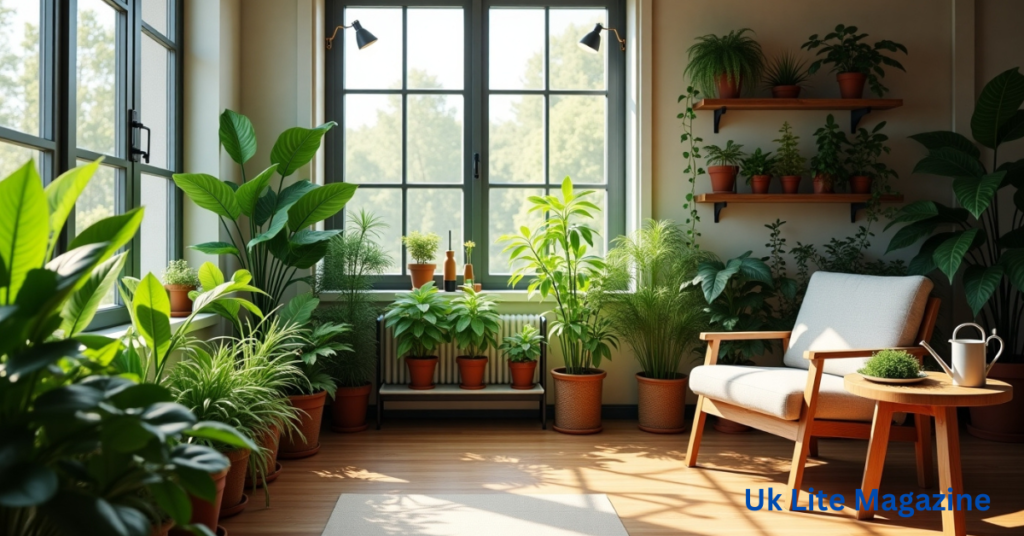Creating an indoor garden is a wonderful way to bring nature into your home while also improving air quality, reducing stress, and adding a touch of beauty to your living space. Whether you live in a small apartment or a large house, you can design an indoor garden that suits your space and lifestyle. This guide will walk you through the essential steps to start designing an indoor garden for a healthier home.
Benefits of an Indoor Garden
Before we dive into the steps, it is important to understand why an indoor garden is beneficial. Some key advantages include:
- Improves Air Quality: Plants absorb carbon dioxide and release oxygen, making the air fresher. Some plants also remove toxins from the air.
- Reduces Stress and Anxiety: The presence of greenery has been shown to promote relaxation and reduce mental fatigue.
- Enhances Home Aesthetics: A well-designed indoor garden can serve as a stunning decor element.
- Boosts Humidity Levels: Plants release moisture, which helps in maintaining indoor humidity and preventing dry skin and respiratory issues.
- Encourages a Healthier Lifestyle: Growing herbs and vegetables indoors can encourage better eating habits and a closer connection to nature.
Step 1: Choose the Right Location
The first step in designing an indoor garden is deciding where to place it. Consider the following factors:
- Light Availability: Most plants require natural light. A spot near a window with indirect sunlight is ideal.
- Space Constraints: If you have limited space, consider vertical gardening with hanging planters or wall-mounted shelves.
- Humidity and Temperature: Keep your plants away from air conditioners, heaters, or vents that could cause temperature fluctuations.
Step 2: Select the Right Plants
Not all plants thrive indoors. Choose plants that match your indoor conditions and care preferences. Some easy-to-maintain indoor plants include:
- Air-Purifying Plants: Spider plant, snake plant, pothos, and peace lily.
- Low-Light Plants: ZZ plant, ferns, and philodendrons.
- Herbs for Cooking: Basil, mint, rosemary, and thyme.
- Succulents and Cacti: Require minimal watering and maintenance.
Step 3: Choose the Right Containers
Selecting the right containers is crucial for plant health. Consider these factors:
- Drainage Holes: Ensure your pots have drainage holes to prevent overwatering.
- Size Matters: Choose a pot that allows room for root growth.
- Material: Ceramic and clay pots provide good aeration, while plastic pots retain moisture longer.
Step 4: Use Quality Soil and Fertilizers
Indoor plants require nutrient-rich soil. Use a high-quality potting mix that provides good aeration and drainage. You can also add:
- Compost: Adds natural nutrients.
- Organic Fertilizers: Helps in plant growth without harmful chemicals.
- Perlite or Sand: Improves drainage and prevents root rot.
Step 5: Provide Adequate Light
Different plants have different light requirements. Here’s how you can ensure they get enough light:
- Place Near Windows: East or south-facing windows provide the best light.
- Use Grow Lights: If natural light is limited, LED grow lights can provide the necessary spectrum for plant growth.
- Rotate Plants: Move them periodically to ensure even light exposure.
Step 6: Maintain Proper Watering and Humidity
Overwatering is one of the most common mistakes. Follow these watering tips:
- Check Soil Moisture: Insert your finger into the soil; if it feels dry, it’s time to water.
- Use Room-Temperature Water: Cold water can shock plant roots.
- Increase Humidity: Group plants together, use a pebble tray, or mist them occasionally to maintain humidity.
Step 7: Regular Maintenance and Care
To keep your indoor garden thriving, follow these maintenance tips:
- Prune Dead Leaves: Encourages new growth and keeps plants looking neat.
- Dust Leaves Regularly: Wipe leaves with a damp cloth to allow better photosynthesis.
- Repot When Necessary: If roots start growing out of the pot, repot into a larger container.
- Watch for Pests: Check for signs of insects like spider mites and treat them immediately with organic pesticides.
Conclusion
Designing an indoor garden is an enjoyable and rewarding process that can transform your home into a healthier and more refreshing space. By selecting the right plants, providing proper care, and ensuring suitable lighting and humidity, you can create a thriving indoor oasis. Start small, experiment with different plant varieties, and enjoy the benefits of nature within your home.
Frequently Asked Questions (FAQs)
1. What are the easiest plants to grow indoors?
Some of the easiest indoor plants to grow include snake plants, pothos, spider plants, and peace lilies as they require minimal care and thrive in low-light conditions.
2. How often should I water my indoor plants?
Watering depends on the plant type. Most indoor plants should be watered once a week, but always check the soil moisture before watering.
3. Can I grow vegetables indoors?
Yes, leafy greens like spinach, lettuce, and herbs like basil and mint grow well indoors with proper lighting and care.
4. How do I increase humidity for indoor plants?
You can increase humidity by grouping plants together, misting them, using a humidifier, or placing a water-filled pebble tray under the pots.
5. What should I do if my plants develop yellow leaves?
Yellow leaves may indicate overwatering, poor drainage, or lack of nutrients. Check the soil and adjust watering habits accordingly.

